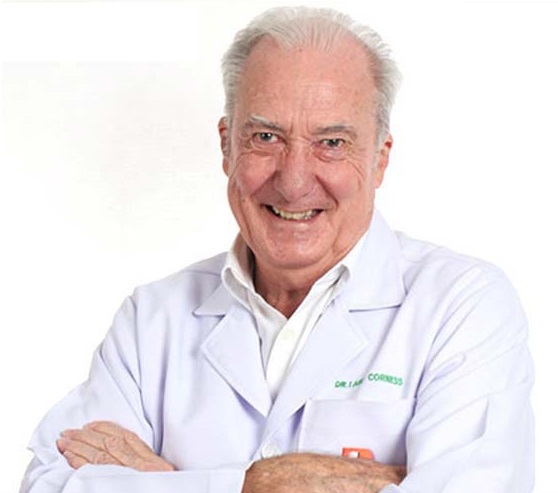 Acronyms in medicine can kill. This has been borne out on many occasions, but medical notes are full of them. Take PD, for example. That can mean Provisional Diagnosis, Panic Disorder, Parkinson’s Disease or even Police Department. Another is GS, which stands for Gleason Score (a way to grade prostate cancers), but unfortunately also stands for another 15 items, including the Gardner Syndrome, Griscelli Syndrome, Gitelman Syndrome and Gorlin Syndrome. Take your pick, and hope it fits the situation.
Acronyms in medicine can kill. This has been borne out on many occasions, but medical notes are full of them. Take PD, for example. That can mean Provisional Diagnosis, Panic Disorder, Parkinson’s Disease or even Police Department. Another is GS, which stands for Gleason Score (a way to grade prostate cancers), but unfortunately also stands for another 15 items, including the Gardner Syndrome, Griscelli Syndrome, Gitelman Syndrome and Gorlin Syndrome. Take your pick, and hope it fits the situation.
However, returning to your NOF, the subject of this week’s column, this stands for Neck of Femur, and fracturing your neck of femur (fracturing your hip) is very prevalent as we get older.
Over the past six years there have been approximately 420,000 hip fractures in the UK. Many of these people will have been permanently disabled, most will have suffered a dramatic reduction in their quality of life and more than 80,000 people will have died as a consequence of their hip fracture. Hip fractures alone cost the NHS £2.3 billion per year.
There are a few reasons we get a fracture of the NOF and the first is because our bones become more brittle as we get older, as the calcium levels become depleted. This is called ‘Osteoporosis’, or the fragile bone disease, and affects the whole skeleton but it commonly causes fractures to bones in the wrist, spine and hip. There are over 70,000 hip, 50,000 wrist and 120,000 spinal fractures each year in the UK. And these are mainly the older generations (and these are the generation that includes pensioners, of which a large number come to Thailand to retire, and get their fractured NOFs treated locally).
There are many people who are ‘at risk’ of osteoporosis, including:
Post-menopausal women and not taking estrogen.
A personal or maternal history of hip fracture or smoking.
Post-menopausal woman who are tall (over 1.7 meters) or very thin.
Males with clinical conditions associated with bone loss.
Anyone taking medications that are known to cause bone loss, including corticosteroids such as Prednisone, various anti-seizure medications such as Dilantin and certain barbiturates, or high-dose thyroid replacement drugs.
People with type 1 (formerly called juvenile or insulin-dependent) diabetes, liver disease, kidney disease or a family history of osteoporosis.
People with thyroid conditions, such as hyperthyroidism or parathyroid condition, such as hyperparathyroidism.
Those who have experienced a fracture after only mild trauma.
People with X-Ray evidence of vertebral fracture or other signs of osteoporosis.
That list above seems to cover just about everyone, so how can you find out whether you have already experienced calcium loss and osteoporosis? This can be demonstrated very simply by Bone Density Scanning.
Bone density scanning, also called dual-energy X-Ray absorptiometry (DXA or DEXA) or bone densitometry, is an enhanced form of X-Ray technology that is used to measure bone density loss. DEXA is today’s established standard for measuring bone mineral density (BMD).
One of the main reasons (with women) is the dwindling hormonal levels that come with the menopause, which affect the calcium metabolism.
Finally, there is the design of the neck of the femur and hip joint itself, which beggars belief from the engineering point of view. When you fall on to the hip, the very thin NOF is easily sheared off. If you subscribe to the celestial theory of our development, then God was certainly not an engineer, despite building our world in a record setting six days.
Returning to the inherent problem, what we have to do is treat the osteoporosis. Evidence has shown that half of future hip fractures would be prevented if everyone was treated for osteoporosis after their first fracture. Unfortunately, it is not quite that simple.
The metabolism of calcium is not such that if you start to drink gallons of high calcium milk every day you are cured. Getting the calcium from the stomach to the bones is complex, and whilst calcium supplements have their place, they are not the be all and end all.
If you are at risk, consider checking your BMS (bone mineral density) first and be guided from there.
 |
 |
 |





